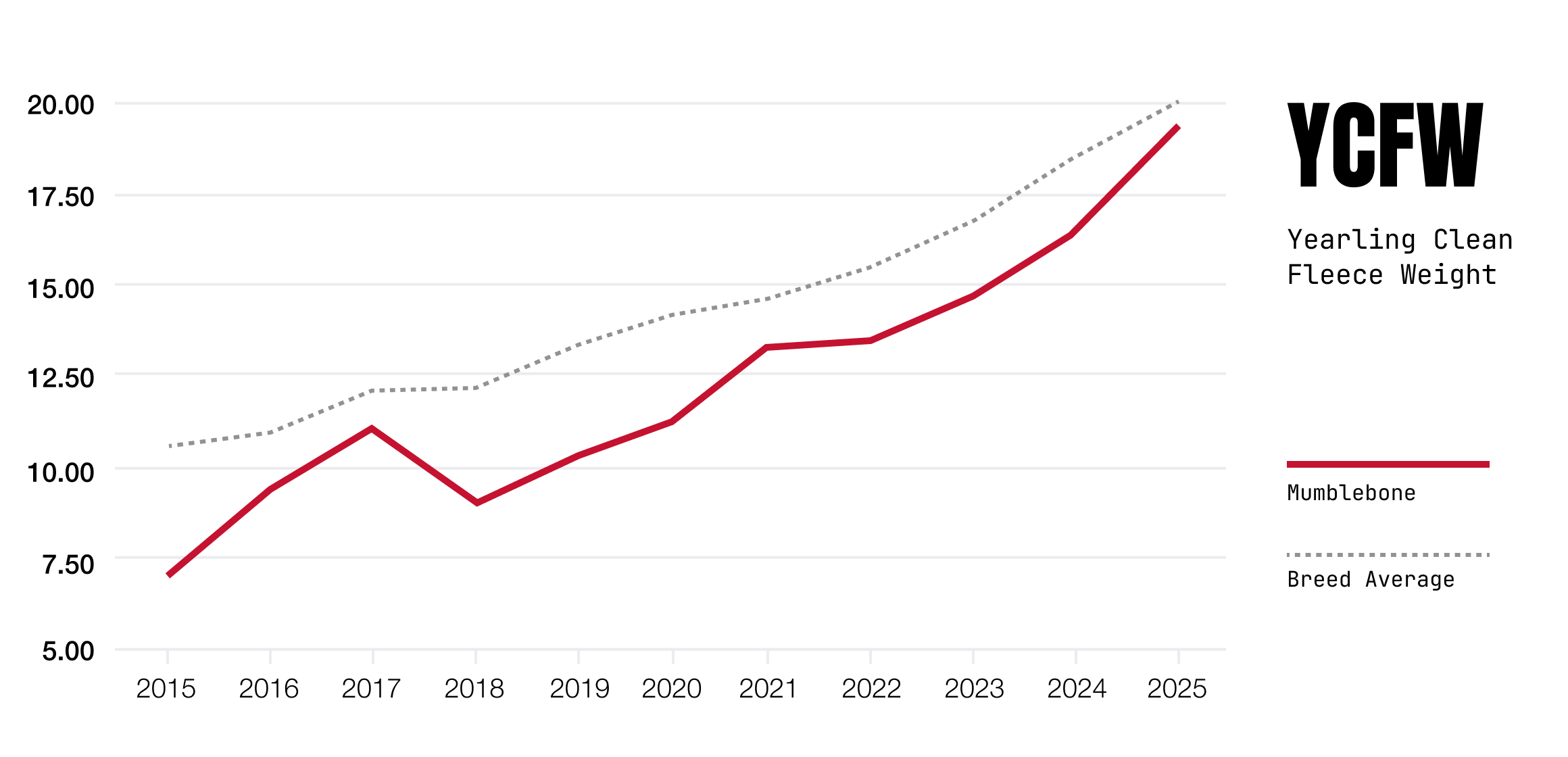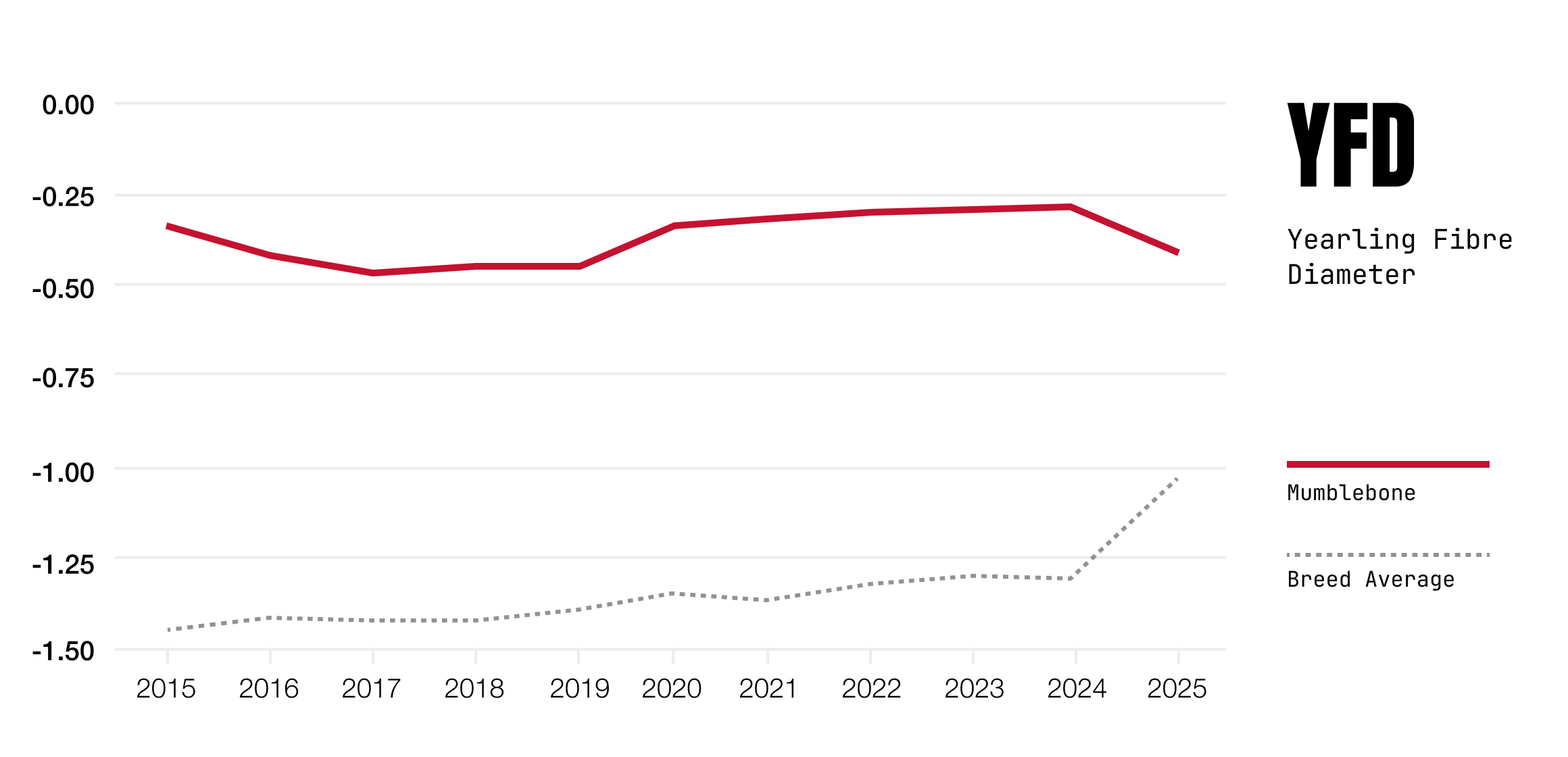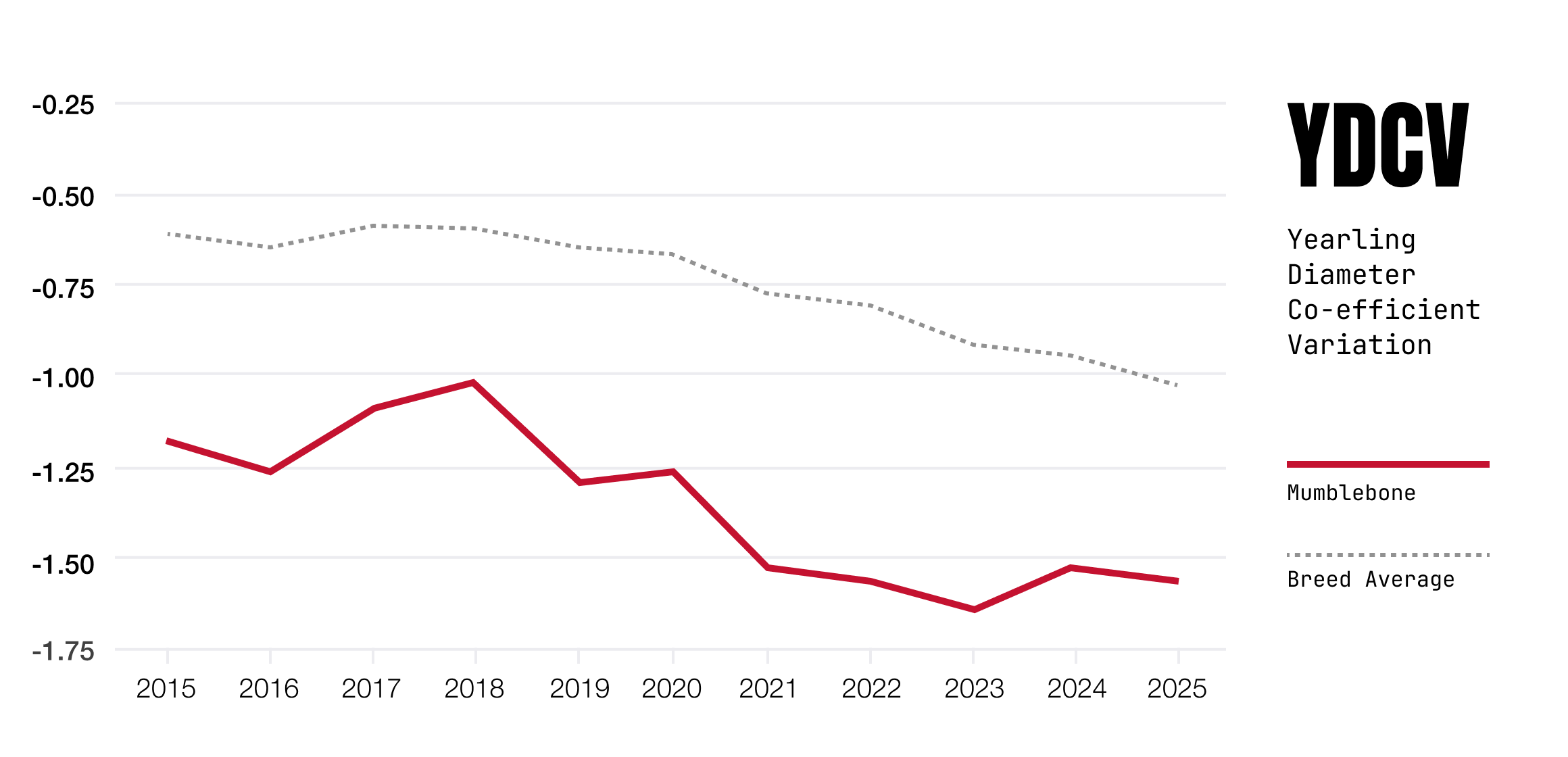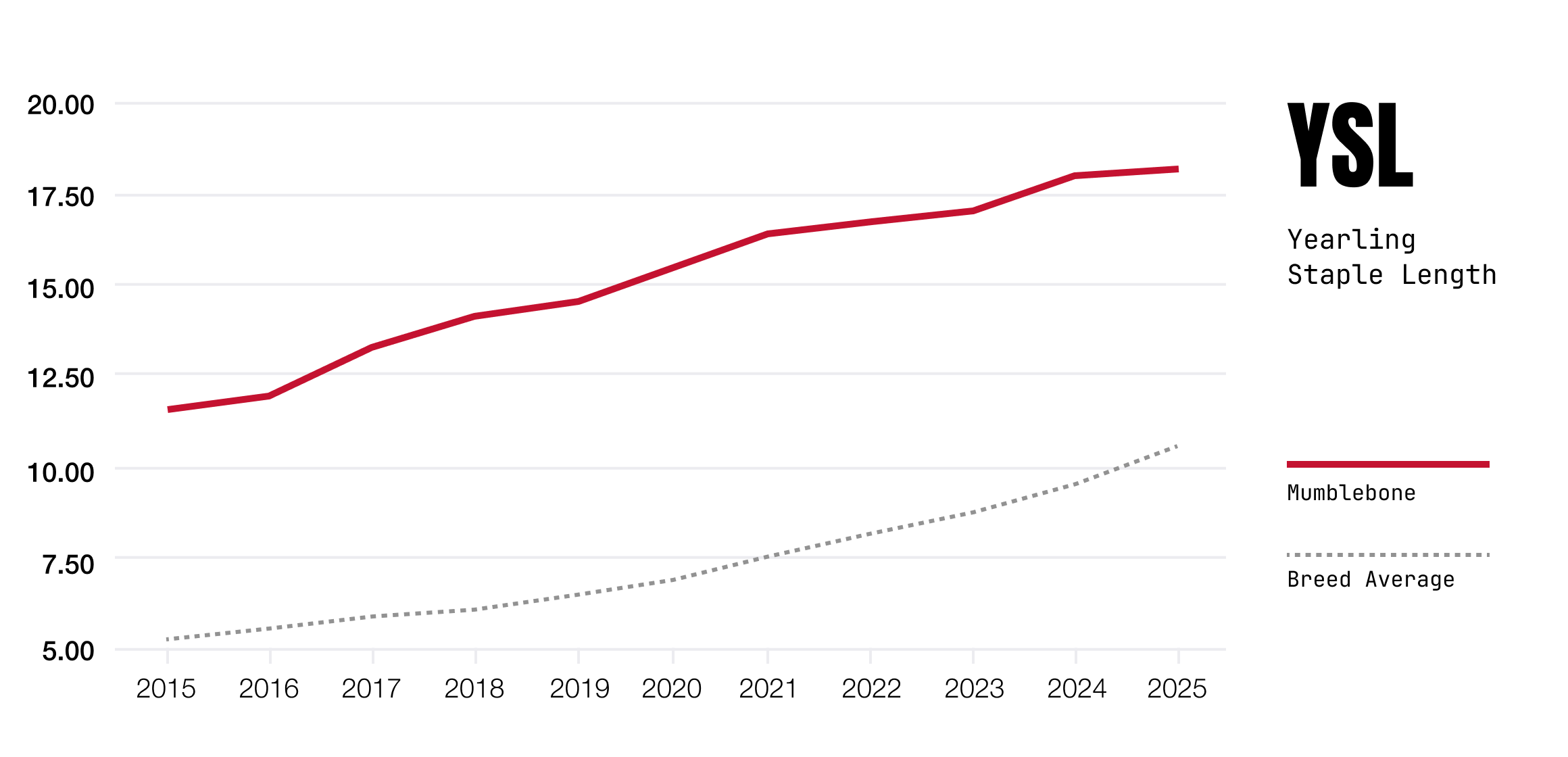Driven by a lifelong fascination with wool, our breeding philosophy centres around sheep with a high-value fleece that resists fleece rot and fly strike.
We understand the importance of maintaining a balanced approach that optimises wool production, alongside reproduction and survival, as it’s the combination of all aspects that sets the modern merino apart from all other breeds of sheep.
Yearling Clean Fleece Weight
Given wool is antagonistic with survival:
We need to balance selection for wool with condition score (fat & muscle) & reproduction to combine good fleece weights on an animal that wants to live.

Correlations of increased fleece weight
- Body weight and growth go up
- Staple length goes up
- Fat goes down
- Reproduction goes down
- Higher fibre diameter
- Increased wrinkle score
- CV of fibre diameter goes up
Yearling Fibre Diameter
As with wool, selection for lower fibre diameter has a negative impact on reproduction & survival. Our program focuses on high levels of reproduction & survival while maintaining a YFD average on, or below 0.0
On our country, a YFD of 0.0 equates to around 19.0 microns, & this will vary between districts. We think it’s important to build in high levels of reproduction as a first step for a flock & then use the extra classing pressure to focus on reducing YFD. If YFD is selected for as a first step, it becomes hard to raise high numbers of lambs to create the classing pressure needed to lift reproduction.

Correlations of lower fibre diameter YFD
- Comfort factor improves
- Lower fleece weight
- Lower growth
- Lower body weight
- Lower staple length
- Lower staple strength
- FDCV goes up
Yearling Diameter Coefficient Variation
YDCV measures the variation of fibre diameter in a fleece. The lower the number the better.
This variation increases with skin wrinkle & reduces with genetic fat. Our sheep have a low average YDCV due to direct selection for this trait but also due to them being free of skin wrinkle & high in Fat.

Correlations of reducing FDCV
- Muscling improves
- Fatness improves
- Higher growth
- Worm resistance improves
- Less fleece rot/body strike
- Higher staple strength
- Fleece weight can fall
Yearling Staple Length
As our sheep became plainer, their staple length increased. We have further selected for SL to open the door to shearing our sheep more regularly.
In an independent trial run on our flock in 2019-20 we found that shearing twice a year produced:
- 8% more wool
- 12% higher condition score &
- 12% more lambs.
There were also improvements in Vegetable Matter, Staple Strength & Yield, all of which add further value to the clip.
Interestingly, the increase in lamb survival was all from the twin born lambs, highlighting the importance of condition score for good lamb survival.

Correlations of increased staple length
- Fleece weight improve
- Higher growth
- Lower FDCV
- Less fleece rot
- Washing yield goes up
- Reproduction can go down
- Fibre diameter goes up
Wool is an essential part of our genetic mix. Pairing the production of a high value fleece, without sacrificing survivability & reproduction. It was a childhood fascination with wool that led to our current business focus on the whole Merino sheep, at a stud & commercial level.
Wanting to breed wools that stayed white in wet years, without attracting fly pressure was the first step to what is now a program that spans across 30 individual traits, & although we now measure a much broader range of traits, wool has remained a critically important component of our flock at every stage.
The advantage a Modern Merino sheep has over other meat focussed breeds is that we have a broader range of profit drivers – those being lamb & surplus sheep, as well as a valuable fleece on both the lamb & its mother.
Modern Merino genetics can now wean over 130% lambs, with high growth rates, and a high value fleece. There are some simple steps to take to combine all of these areas and once done, we have an animal that leads the industry in terms of profitability, & much of that is due to wool.
It is essential that we combine selection for all traits in a manner that will not only produce a high value fleece, but do it on an animal that wants to reproduce itself easily.
With approximately 30% of a modern flock’s income being derived from wool & 70% from lambs & surplus sheep, we must be careful not to over-select for wool at the expense of reproduction & survival.
Fleece weight
Correlations of increased fleece weight:
- Body weight and growth go up
- Staple length goes up
- Fat goes down
- Reproduction goes down
- Higher fibre diameter
- Increased wrinkle score
- CV of fibre diameter goes up
Fibre Diameter
Correlations of lower fibre diameter YFD:
- Comfort factor improves
- Lower fleece weight
- Lower growth
- Lower body weight
- Lower staple length
- Lower staple strength
- FDCV goes up
Warrambeen has sourced genetics solely from Mumblebone since 2019. They have proven to perform extremely well in our wet, southern Victorian climate with very little fleece or body structure faults resulting in us achieving our production targets 5 years in front of our strategic growth plan.
Our flock is run under commercial, low labour, intensive, rotational grazing management. Chad & the Mumblebone Team have been able to breed to, and exceed, our modern dual purpose breeding value targets and bring in production traits from industry outlier rams to push the boundaries of the Modern Merino whilst maintaining key quality traits – a skill not often found.
Manager, Warrambeen Victoria

